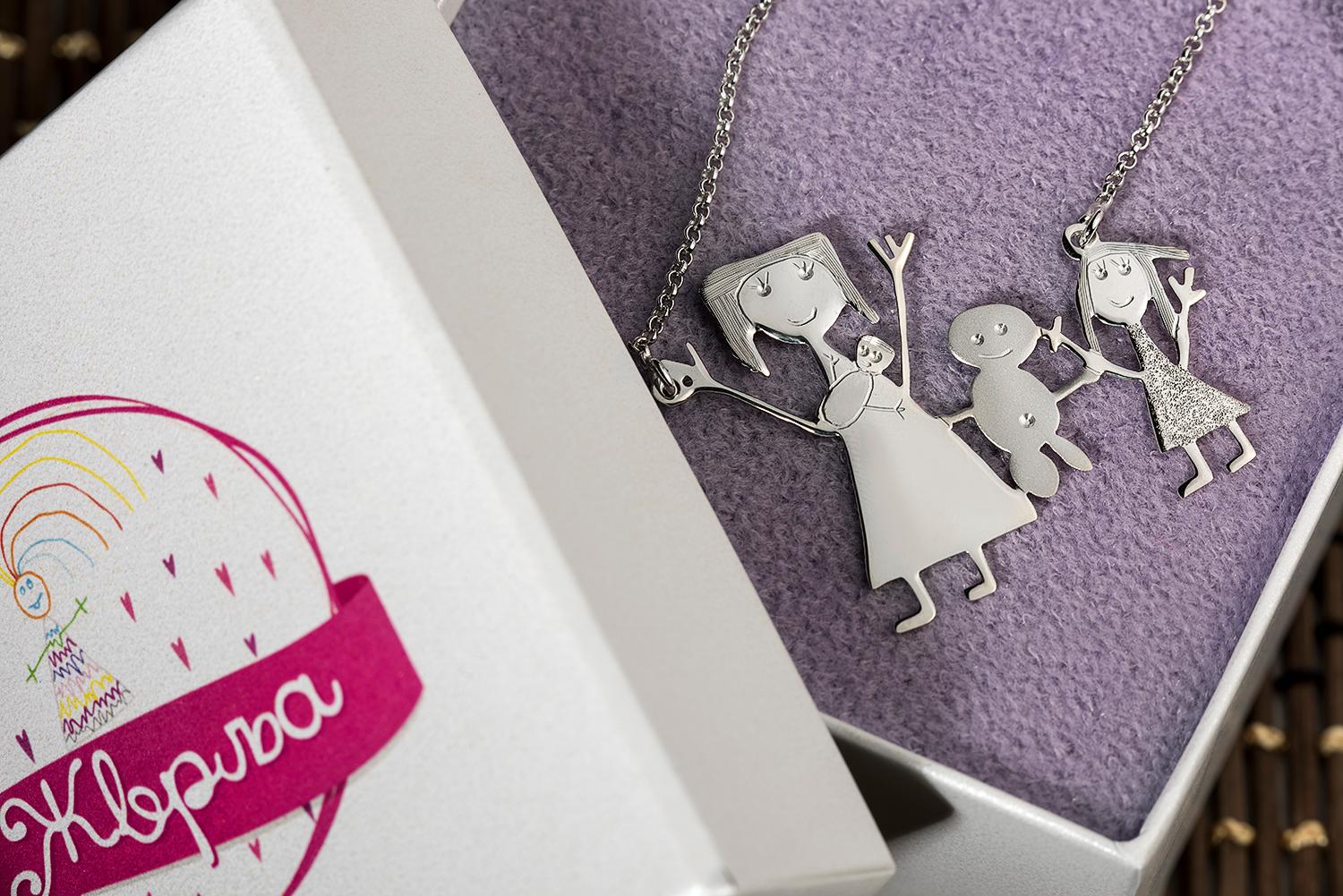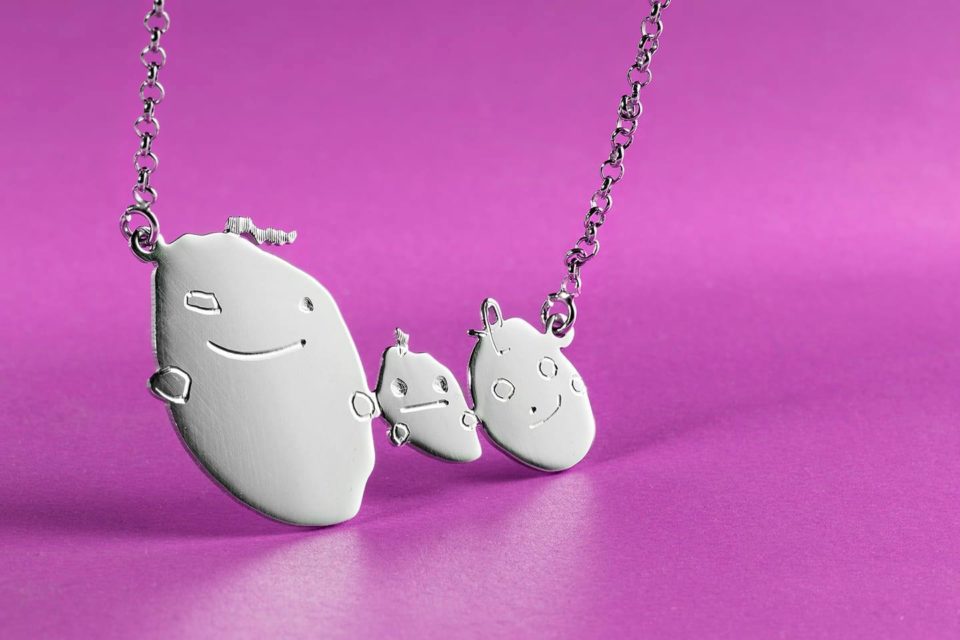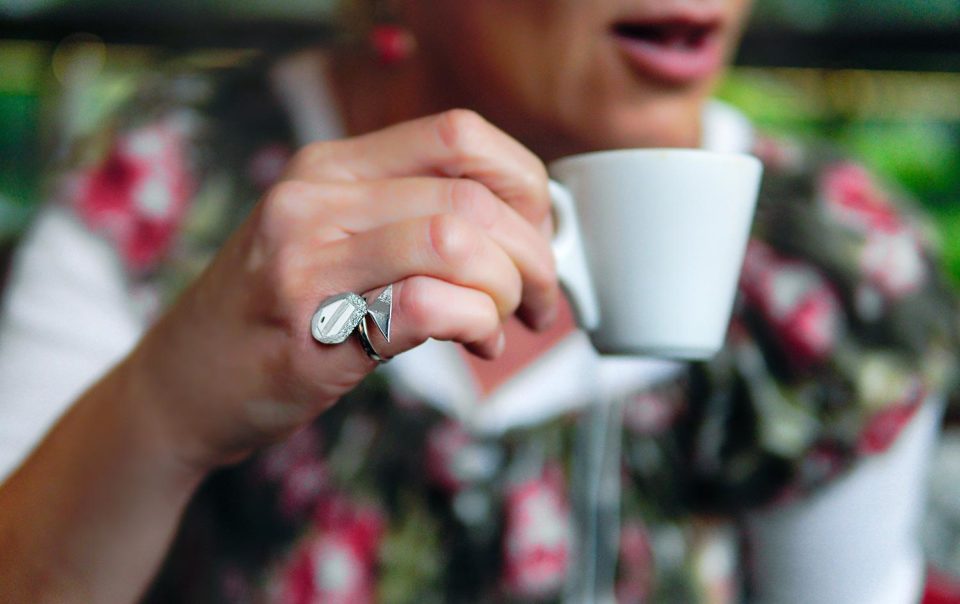
Mina Vesković, a literature professor, created the brand Žvrlja. Under this label, they craft jewelry based on children’s drawings, preserving the memories of childhood.
It all began with Professor Vesković’s desire to create a necklace from her daughter’s first drawing, one that she wanted to keep forever. This is how the first Žvrlja piece, featuring a little girl with pigtails, came into being.
“I wanted to capture this moment of my child’s development, so I came up with the idea that instead of framing her first drawing as a picture, I would turn it into a necklace. Then my daughter’s godmother wanted one, and so did my friends and their friends. With the help of friends, my idea started to become a reality,” recalls Vesković.
The jewelry is exclusively custom-made, based on the desires and drawings sent in by mothers, fathers, aunts, and other relatives of the child drawers. Once a drawing is received, it is traced onto silver or gold. The crafting process then begins, incorporating various decorative techniques. Each stage of the creation process is done by hand, demanding several hours to craft each unique piece.
“The most common motifs of the jewelry are portraits of mothers, aunts, and grandmothers, closely followed by first letters, first drawings of the sun, pets, family portraits,” explained the owner of Žvrlja.

The creation of these masterpieces is entrusted to a craftsman and an artist with whom she has been collaborating since the inception of Žvrlja. “Each piece of jewelry is crafted in a unique and personalized way, making it a one-of-a-kind item because there is only one ‘Žvrlja’ like it in the whole world,” Vesković noted.
When introducing Žvrlja, she often says, “Capture the moments as your little ones grow up.” This is precisely the essence of these creations: keepsakes of childhood and important family moments.
Her favorite part of the collection is the original drawings created by children because they radiate sincerity, spontaneity, and the irresistible imagination of children.

“Our most darling creations are the first drawings of little ones when we’re not sure if a dot is a nose, an eye, or a tuft of hair. We first interpret the masterpiece together, often with input from the mothers who explain certain details, and then we begin crafting,” she said, explaining the initial steps of making a Žvrlja piece.
To aspiring jewelry makers, her advice is to dive into realizing one’s visions without overthinking and to continue learning along the way.
“Today, there are numerous opportunities for education, excellent experts, programs, and associations that bring entrepreneurs together and encourage them. Indeed, it has never been easier to showcase your product or service through social media,” concluded Vesković.
_______________
This article was initially published within the second edition of MIR Magazine (May 2024). MIR, which means ‘peace’ in Bosnian is an annual publication and platform for young inventive people developed by the Post-Conflict Research Center and Balkan Diskurs.






